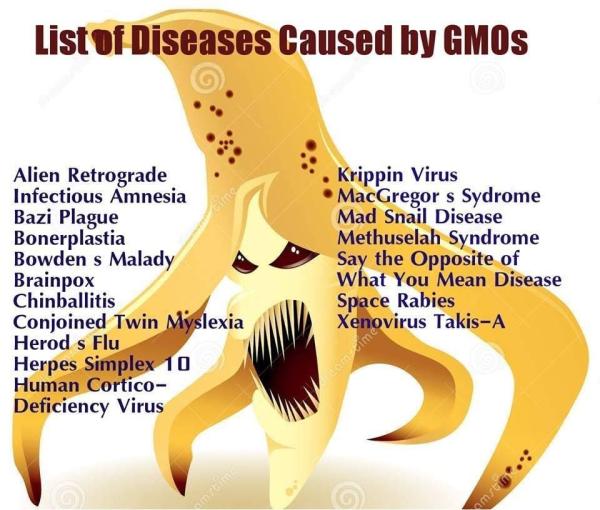Many people believe that a so-called “genetically modified organism” (GMO) is a term that has some significance for interpreting the safety of food. Most life scientists -- geneticists, biologists, ecologists, and agronomists -- are pretty sure that the opposite is true.
First, we should distinguish between two points:
(1) A theoretical keystone of agri-food biotechnologies and the related safety issues; and
(2) socioeconomic considerations.
In both cases, “GMO” appears to be a detrimental meme and a misleading compass.
Product, not process
A recent in-depth study released by the U.S. National Academies of Sciences, Engineering, and Medicine makes clear that the process of genetic engineering is not riskier than older methods of genetic alteration. The results of that report basically confirm a similar analysis that was released more than a third of a century ago. From the 1990s to today, many position statements by scientific societies, not to mention countless papers by individual scholars, have reaffirmed that axiom.
Between 1983 and 2010, the EU spent over €300 million funding dozens of research projects, the conclusions of which are invariably the same: It does not make sense to think of GMOs as uniquely hazardous. Thus, it is very frustrating to see that the “GMO-is-a-fallacious-category” wheel needs to be reinvented again and again.
Any talk of “Frankenfoods” is particularly unscientific. While some members of the public are concerned about GMOs, the overwhelming majority of experts do not share this concern. Worse, the groups that fuel the Frankenfood fearmongering are reactionary anti-biotech groups that profit from making people afraid of their dinner. The media, which feels compelled to give “both sides” of the debate, creates false balance and a distorted picture of scientific reality.
The scientific and epistemological mistake is focusing on the process that is used to develop new crops or animals instead of the safety of the product. Indeed, traditional techniques can create dangerous crops, like the conventionally bred potato that poisoned people. Unpredictability is inherent to any biological process, including traditional crossing.
However, biotechnology is far less likely to make such a mistake, as techniques usually involve transferring a single known gene from one organism into another. Despite this, critics claim that genetic engineering is “unpredictable.” That statement is only half true. Sure, there can be unforeseen consequences with any new crop (transgenic or otherwise), but that is specifically why they are rigorously tested before going to the market. Products that are deemed potentially hazardous – perhaps due to the presence of an allergen – are removed from the R&D pipeline.
Indeed, those who demand never-ending tests to “prove the safety” of GMOs are not able to put forward any science-based reason: not a single peer-reviewed paper has ever been published which even gives theoretical justification for considering DNA-tinkering to be inherently dangerous.
Socioeconomic issues in agriculture
Because they are losing the scientific argument, GMO critics now focus on a socioeconomic argument: They dislike “Big Ag” charging farmers high prices for seeds and controlling our food supply. This argument is also specious.
Transgenic crops are not the only ones to be patented. Traditional hybrid crops are also intellectually protected property. And, they can be expensive, too. The point is that the price of a seed is not linked to whether or not it is a GMO. Furthermore, the patent issue isn’t nearly as big as critics contend. In low-income countries, seeds (GMO or otherwise) are frequently distributed to peasants for free by public and philanthropic institutions. The only reason to oppose such programs is due to an anti-biotech bias.
Furthermore, consider the increasing success of GMOs in the developing world. In 2013, 18 million farmers, 90% of whom are smallholders in developing countries – including 7.3 million in China and 7.5 million in India – used GMOs. How can low-income farmers afford the price of better seed? Because their increased revenues justify higher costs, as agricultural economists explain:
“[E]ven though companies like Monsanto, Pioneer-DuPont, and Syngenta own patents and charge farmers royalty fees for use of the technology, they are only able to capture a minority portion [33 percent on average] of the total economic value they helped to create.”
Thus, an unbiased and in-depth economic analysis destroys the myth that Big Ag is exploiting farmers and controlling the food supply.
I have a humble suggestion. Every time you think of “GMO” or hear it mentioned, immediately connect it with “means nothing”. Eradicate this cultural weed. Watch out for the semantic trap and don’t fall into it anymore. Expose the gigantic blunder. It should be an educational task of all scholars to debunk the “GMO” imbroglio with their students and with the public at large.
This article first appeared in the American Council on Science and Health print magazine Priorities.




